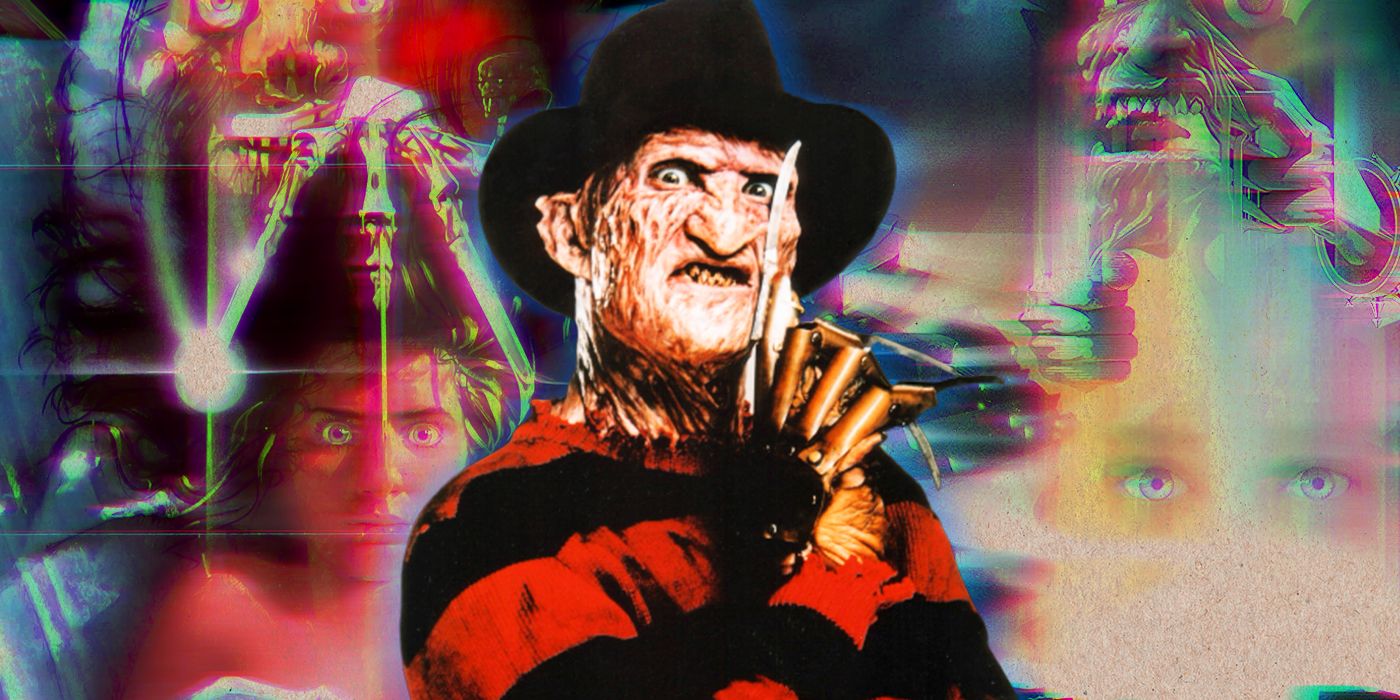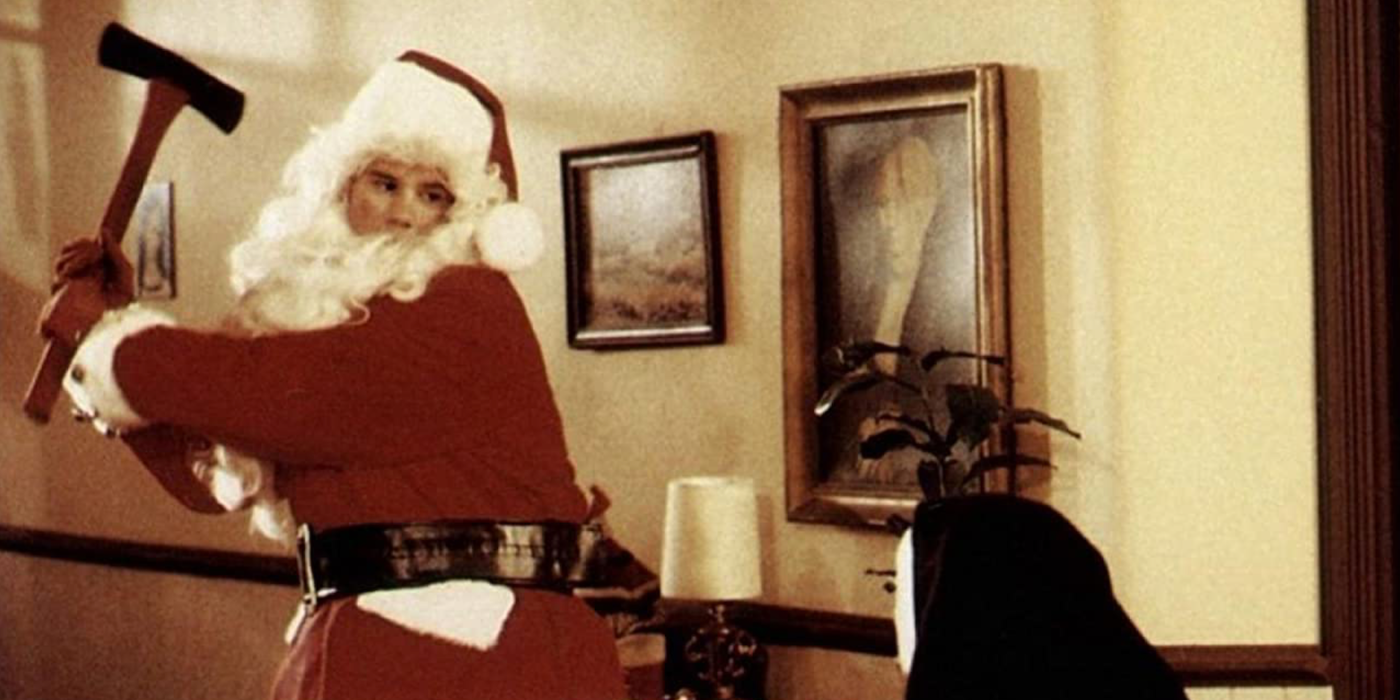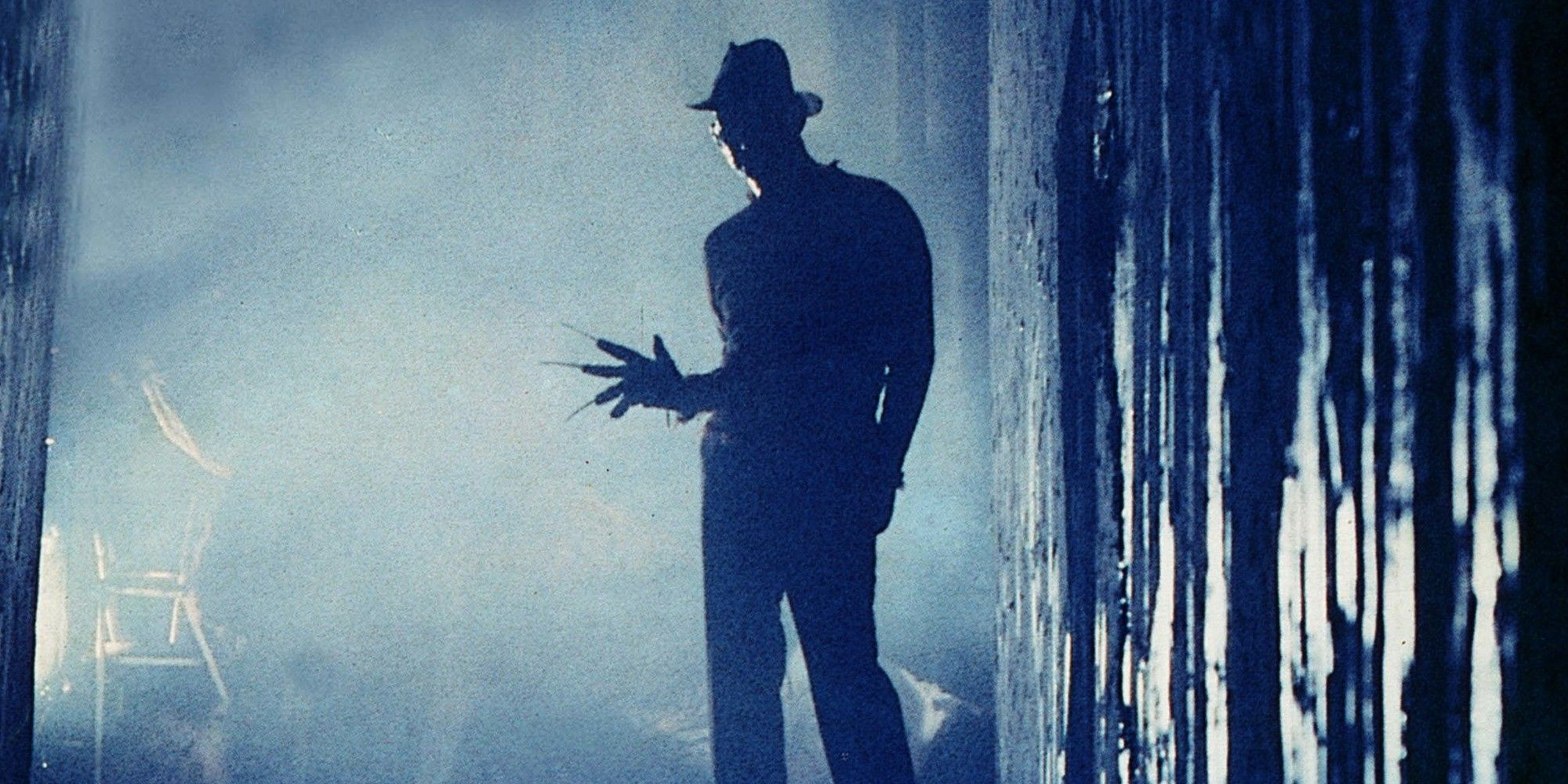Wes Craven’s A Nightmare on Elm Street opened on November 9, 1984, and ultimately changed the course of horror. The movie launched a pop-culture phenomenon with its resident boogeyman, Freddy Krueger, spawning seven more movies, a remake and a TV show, as well as a merchandising bonanza. And Craven would go on to shape not only the genre for the 80s but also the 90s with the Scream franchise. Today, A Nightmare on Elm Street still stands as one of the high points of the genre, and yet, it was eclipsed on release day by another horror movie.
Though inferior in almost every way, Silent Night, Deadly Night engendered far more controversy than Craven’s now-legendary chiller and rode that toward what seemed to be box office gold. In fact, had things broken differently, it might have outpaced its competition on release day.
Silent Night, Deadly Night was another in an endless line of dreary slasher pictures that were the rage at the time. It chose a Christmas theme as its gimmick, with its killer being a deranged lunatic in a Santa suit. But beyond the novelty value and some over-the-top gore, it was a shabby effort, not even being the first horror movie to use a Christmas theme. 1972’s Tales from the Crypt also featured a serial killer dressed as Santa Claus, and 1974’s Black Christmas had a similar premise. And to make matters worse, Joe Dante's Gremlins opened just a few months earlier in the summer of 1984, featuring both an overt Christmas theme and enough shocks and gore to help prompt the creation of the PG-13 rating.
None of that stopped Silent Night, Deadly Night from generating an uproar, though. Parents groups called for a boycott, and the distributors of the movie canceled their ads six days after release. The movie even became the subject of a special section of At the Movies with Siskel and Ebert, with the famous duo tearing into it for its perceived abhorrent content. None of it was wrong, strictly, but by framing in such terms, its critics lent it an unearned allure that did exactly what the producers wanted it to do. Charged by the free publicity, the movie outgrossed A Nightmare on Elm Street on its opening weekend and was set to do more before being pulled from distribution after two weeks when the backlash intensified.
Despite more disturbing content and superior craftsmanship, the lack of Santa or similar controversy kept A Nightmare on Elm Street below the censors’ radar. It ultimately grossed $57 million at the box office on a budget of just over a million and improved the fortunes of its distributor, New Line Pictures, with the studio being known for decades as “The House that Freddy Built.” Silent Night, Deadly Night, meanwhile, could do little once its initial shock value wore off. Though it produced its own series of sequels, they were far cheaper and more threadbare than Elm Street’s, and its perceived shock value was quickly forgotten amid more novel controversies. It retains a hardcore cult following, though more for the furor it created than anything notable about the movie itself.
Ironically, A Nightmare on Elm Street did more to “corrupt” the culture at the time than Silent Night ever could. Freddy’s success morphed him into more of a ghoulish theme park mascot than a true terror, with products that included children’s pajamas and lunchboxes among others. Craven himself was so disturbed by it that he returned to the franchise with Wes Craven’s New Nightmare, exploring his perceived responsibility in letting a character he created as evil incarnate become so perversely beloved.
In the meantime, the original A Nightmare on Elm Street film continues to share a curious release date with a movie that made far bigger waves at the time. But while history has made the final call, it was much harder to see that in 1984 -- a reminder that the movies which stand the test of time don’t always look that way when they first arrive.



